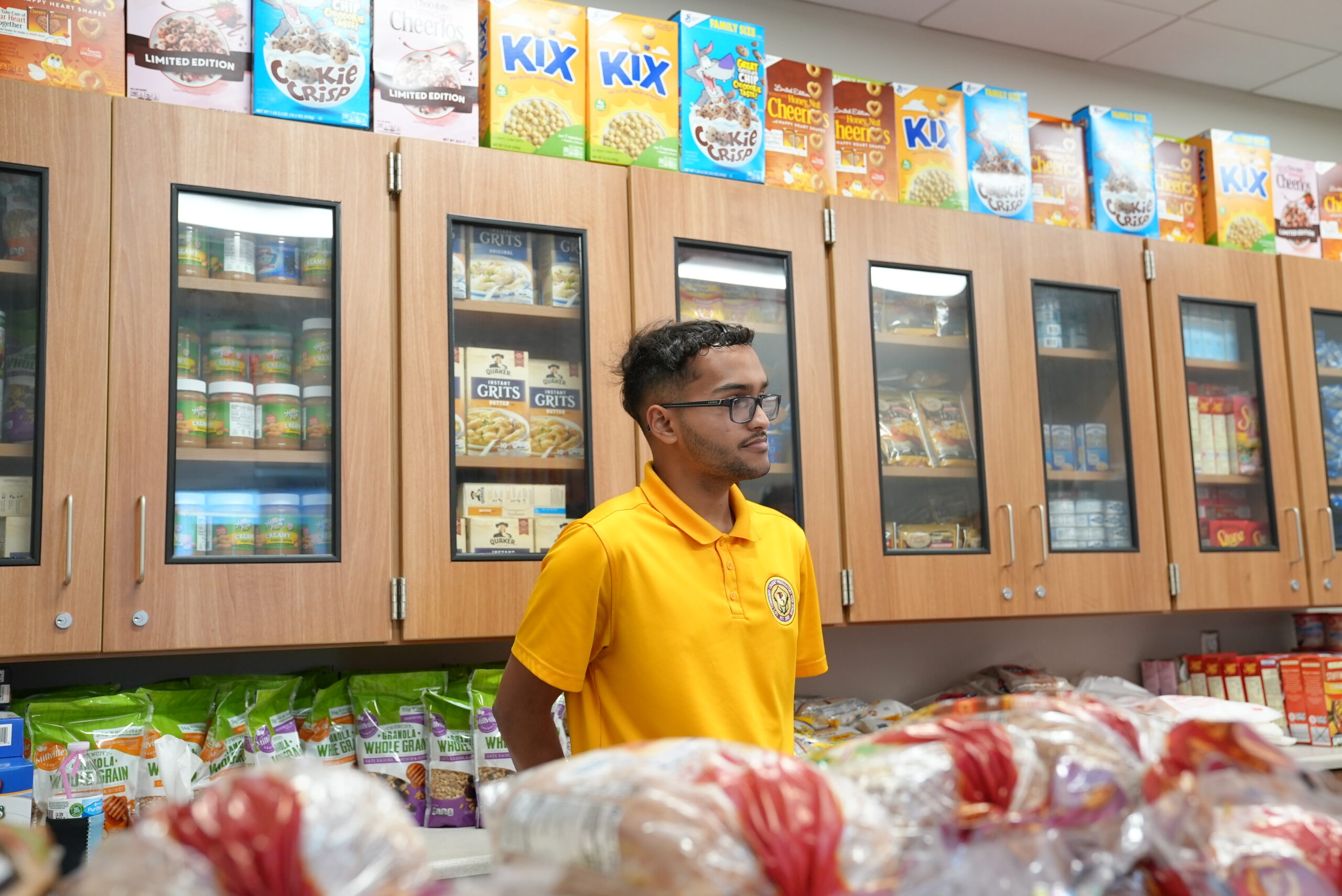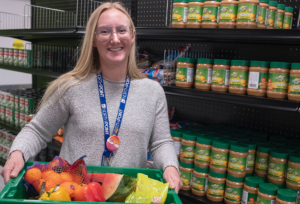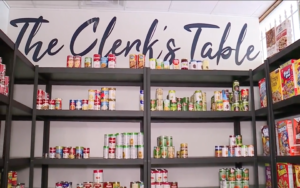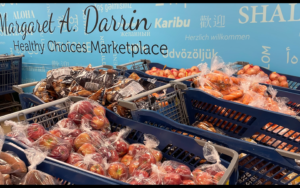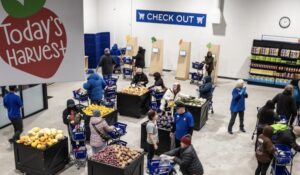School backpack programs have been a mainstay of food banking ever since the first one debuted nearly 30 years ago at the Arkansas Rice Depot (now Arkansas Foodbank). The Feeding America network currently supports backpack programs at more than 10,000 schools and institutions, serving more than 54 million meals in 2022 alone.
The overwhelming popularity of the programs makes Feeding Tampa Bay a bit of an outlier. About five years ago, it halted its backpack program, after conducting research that uncovered what it felt were serious shortcomings.
Now the Florida-based food bank is all in on school pantries, supporting 75 of them across five school districts, up from a pilot of eight in 2018. While it’s not the only food bank to support school pantries – the Feeding America network operates nearly 4,000 of them – it may be the only one with extreme clarity about why school pantries work better than traditional backpack programs.
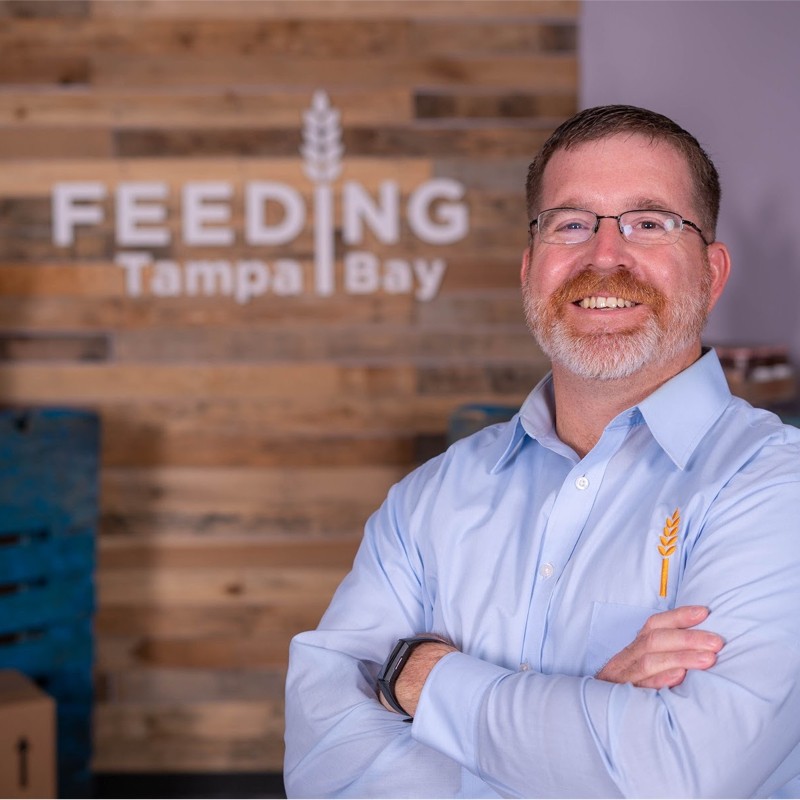
“We have found a model that we feel really good about,” said Matt Spence, Chief Programs Officer at Feeding Tampa Bay.
The food bank’s conversion from backpacks to school pantries has its roots in a partnership between the food bank and University of South Florida, where one of the food bank’s board members, Dr. David Himmelgreen, is a professor of nutritional anthropology. That partnership, which eventually led to the 2020 creation of a joint research center at USF around food security, put Feeding Tampa Bay in position to conduct in-depth study on the value of school backpack programs.
In 2016, a study led by Dr. Himmelgreen found that the kids at a local Boys and Girls Club, many of whom were the children of agricultural workers, were not getting a lot of benefit from the backpack program. Though the food was intended for the children, much of it was shared with family members and even friends. “So it didn’t go that far,” Dr. Himmelgreen said. In addition, a lot of the food was unfamiliar to the largely Hispanic population, so it often went unused.
Feeding Tampa Bay’s initial reaction was to find ways to fix the backpacks. But adding food created a heavy load for young children to carry home. And introducing culturally appropriate choices presented logistical challenges. Plus, there was the uncomfortable reality that children were being asked to perform head-of-household duties when tasked with physically bringing home food, creating an unnatural family dynamic. “We realized that the challenges identified in the research weren’t really fixable with that same model,” Spence said.

So it moved to a new model, conducting a pilot of eight school pantries, an approach that almost immediately led to across-the-board improvements. One is a greater variety of food, especially since the food bank equipped the pantries with cold storage units, allowing them to serve frozen prepared meals and dairy products. Families are also able to choose the food they want, which offers dignity while also giving the food bank better insight into which foods are most popular.
One unanticipated but large benefit of the pantries has been the opportunity to build trusted relationships between schools and families. According to Spence, the superintendent of one of the districts (the nation’s eighth largest) praised school pantries for giving schools the opportunity to show they care for the whole family, not just the academic success of the children.
Other “halo” benefits: the possibility to conduct further research on school food, thanks to established relationships; the opportunity for students to become leaders through pantry volunteering, and the ability to help school districts increase their volume of SNAP applications, which can help with community eligibility.
All in all, the school pantries “work so much better on multiple different levels that just the backpack program,” Dr. Himmelgreen said.
There are some challenges, mostly logistical and none insurmountable, Spence said. The food bank obviously does not control the space where the pantries are housed. Deliveries can only occur when someone from the school is available to receive them. And driver pools may be limited because drivers must go through school background screenings. “Those were just problems we were going to solve, not anything that was going to stop us,” Spence said.
Feeding Tampa Bay’s school pantry effort dovetails with its strategic plan to bring food to “places where people are already congregating instead of asking them to come to us,” Spence said. Public schools are an ideal venue, given that 90% of a community’s children go to them. Plus, schools have detailed data about which families are struggling, which allows for targeted placement of the pantries.
Organizationally, Feeding Tampa Bay’s school pantry effort is not treated as a program, although it started out that way. Now, it’s a distribution strategy that serves the purpose of getting food into more places. Pantries are “part of standard food bank operations,” Spence said. “We think about schools very similarly to how we think about traditional agencies.” – Chris Costanzo
PHOTO, TOP: A food pantry at Sumner High School in Florida.
Like what you’re reading?
Support Food Bank News
